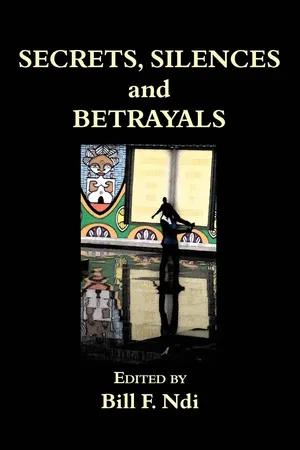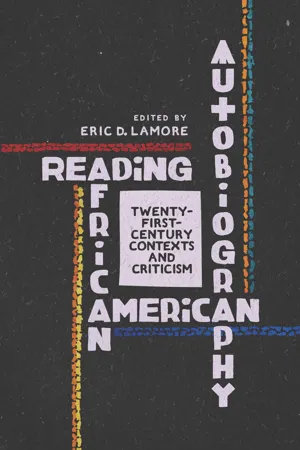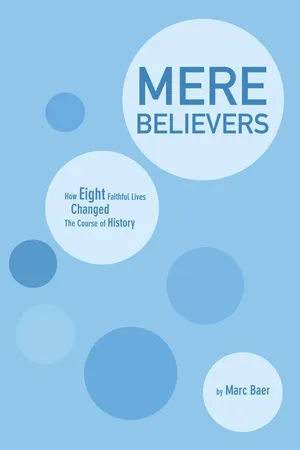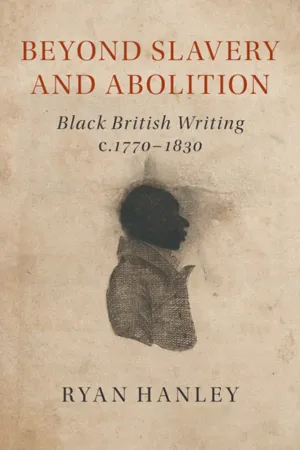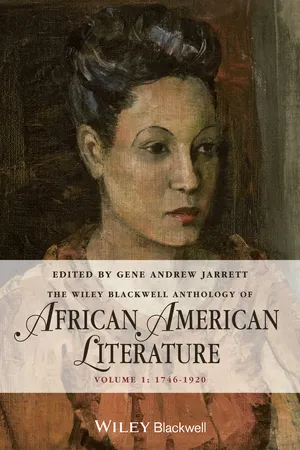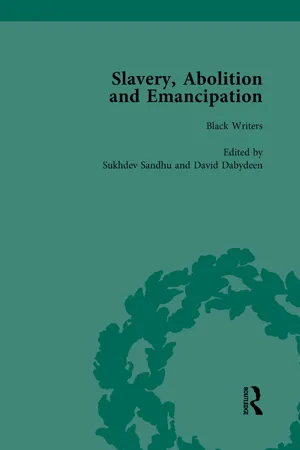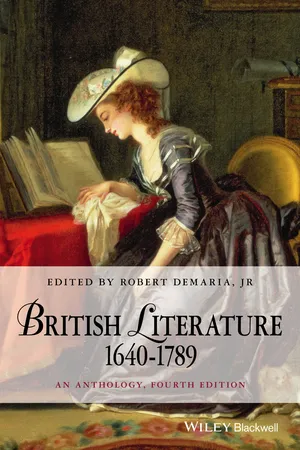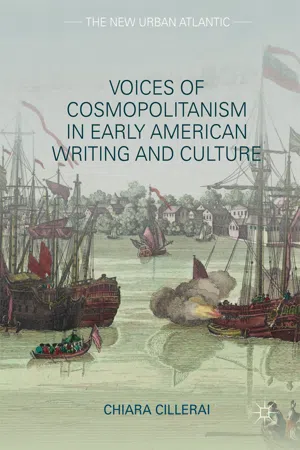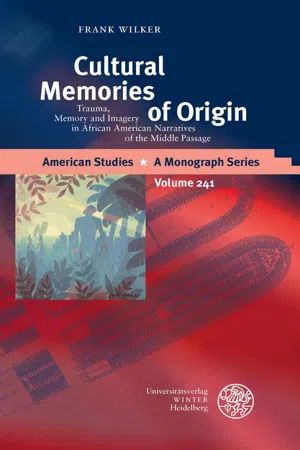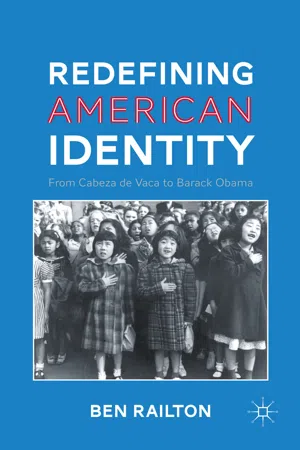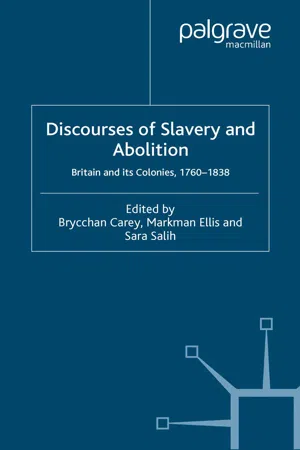Literature
Olaudah Equiano
Olaudah Equiano was a prominent African writer and abolitionist who wrote an autobiography titled "The Interesting Narrative of the Life of Olaudah Equiano." Born in Nigeria, he was kidnapped and sold into slavery at a young age. His autobiography, published in 1789, played a significant role in the abolitionist movement, providing a firsthand account of the horrors of the transatlantic slave trade.
Written by Perlego with AI-assistance
Related key terms
1 of 5
12 Key excerpts on "Olaudah Equiano"
- eBook - PDF
- F. Ndi(Author)
- 2015(Publication Date)
- Langaa RPCIG(Publisher)
2 Olaudah Equiano (c. 1745- March, 1797). From here forward I will refer to the subject as Olaudah or Equiano. 114 attention focused on Equiano has been so extensive and varied in the past two decades that ‘Equiano Studies’ has become a veritable subcategory within the slave narrative genre” (210). What drives this fascination with Olaudah Equiano’s narrative? Of course, in the first place, his exceptional circumstances have no doubt fueled interest in his narrative, circumstances shrouded in secrets, silences and betrayals to be sure. By his own account, Olaudah Equiano was betrayed time and time again, first when he was kidnapped from his Igbo village in present-day Nigeria as a little boy of only about ten years-old. Before his capture, Olaudah had, in his own words, “never heard of white men or Europeans, nor of the sea,” but he would be at the mercy of both for much of his life (20). Indeed, Equiano would be bought and sold at least seven times by the age of twelve and would spend most of his youth at sea. After enduring the Middle Passage and spending a brief stint on a Virginia plantation, Olaudah was purchased by Captain Michael Henry Pascal who took the boy to England with him, but then took to the seas again to fight in the Seven Years War (1756-1763). After the war Equiano continued to sail with his master and captain, distinguishing his experience from that of most enslaved Africans who suffered the fate of the plantation. To the young boy’s dismay, Pascal abruptly sold Equiano in 1763 and the latter ultimately fell into the hands of his last owner, Robert King, from whom he finally manumitted himself in 1776. All of his years of experience aboard ships afforded him the opportunity to learn English reading and writing, mathematics, navigation, and commerce. Once a freeman, Equiano managed to return to England, only to again travel to the West Indies and throughout the world. - eBook - PDF
Reading African American Autobiography
Twenty-First-Century Contexts and Criticism
- Eric D. Lamore(Author)
- 2017(Publication Date)
- University of Wisconsin Press(Publisher)
66 Olaudah Equiano in the United States Abigail Mott’s 1829 Abridged Edition of the Interesting Narrative eric-d.-lamore There are many questions about Equiano which have not been satisfactorily answered. s.-e.-ogude , “Introduction to the New Edition [of Equiano’s Travels]” The Interesting Narrative of the Life of Olaudah Equiano, or Gustavus Vassa, the African. Written by Himself, a text first published in London in 1789, remains a frequently read and debated eighteenth-century autobiography. 1 Equiano’s life narrative is one of the most sophisticated literary texts from the eighteenth-century Atlantic world. Histo- rians of slavery, the eighteenth-century Atlantic world, and abolitionist movements as well as scholars of United States, British, African, and Caribbean literatures continue to study and teach the Interesting Narrative because this autobiography provides the most detailed firsthand account of African cultural customs and the dynamics of the eighteenth-century transatlantic slave trade written by an individual of African de- scent in the English language. Given the inestimable cultural value of this life narra- tive, thousands of students from around the world read all of or portions from the Interesting Narrative each academic year in history, literature, and social science courses. 2 Biographers, literary critics, and historians have benefited immensely from utilizing Paul Gilroy’s influential thinking on the black Atlantic in positioning Equiano—along with other writers from the early black Atlantic—not as a product of a single nation but as part of a larger, interconnected Atlantic world. While critics have studied Equiano’s and his autobiography’s relationship to Great Britain and Africa in some detail, the writer’s and his text’s connections to the North American colonies have not received adequate attention beyond the heated debate on whether he was born in the Carolinas. - eBook - ePub
Mere Believers
How Eight Faithful Lives Changed the Course of History
- Baer(Author)
- 2013(Publication Date)
- Cascade Books(Publisher)
Chapter 2 Olaudah Equiano Story: Identity—Who am I? I offer here the history of neither a saint, a hero, nor a tyrant. Olaudah Equiano, aged 44 “I wish to stand by my own integrity.” 56 These are the words of one of the most remarkable individuals I’ve ever run across. His story speaks to all of us whose aspirations have been unfairly frustrated by others, who are not yet free to pursue their dreams, but who in not giving up model the virtue of fortitude. And because some dreams are not worth pursuing, discernment is another vital element revealed by the subject of this chapter. Sometime around 1745 Olaudah Equiano was born in the southeast region of what is now the African nation of Nigeria. During the next five decades he was to travel, at first involuntarily as a slave, to the African coast, and from there to the Caribbean, several North American colonies, London, the Arctic, and finally throughout the British Isles. Concurrently, his name changed several times, as did his religious beliefs and sense of purpose. From the degradation of being another man’s property, by the time of his death Equiano had become the wealthiest and most famous black person in Britain, and very much a public figure. But that was not his identity—that was not who he was. Having left his homeland in the 1750 s, never to return, in time Equiano became, in his words, “the African.” His life work was to speak for the millions of sons and daughters of Africa sold into slavery, many of whom perished during the infamous Middle Passage between Africa and the Americas, others brutally exploited on plantations in the Caribbean islands or mainland British colonies. When Equiano died in 1797 they were not yet free, nor had human trafficking ended. But the conversation he energized was to continue until international debate ended first the slave trade, then slavery itself in the European empires, and finally in the United States - eBook - PDF
Beyond Slavery and Abolition
Black British Writing, c.1770–1830
- Ryan Hanley(Author)
- 2018(Publication Date)
- Cambridge University Press(Publisher)
Making a Name for Himself: The Interesting Narrative A number of Equiano’s decisions about how to publish and promote his work suggest that he sought to accrue a degree of personal fame as an abolitionist, intellectual and spokesperson for black people both free and enslaved. Indeed, the publication of the Narrative reflected a radical shift in his public persona. Before November 1788, Equiano had been exclu- sively known as Gustavus Vassa, an essentially private individual. He had become well known in London because of his public service, intelligent interjections in the abolition debates and leadership of grass-roots black political activism, but he was not (or at least did not consciously try to be) the embodiment of anything beyond himself. However, when he began to solicit subscriptions to pay for the publication of his autobiography, a schism in his identity became apparent. On one hand, ‘Gustavus Vassa’ remained a major player in the abolitionist movement, exercising per- sonal influence and taking a leading role in its networking and petitioning functions. On the other, a new figure emerged: Olaudah Equiano. This figure was charisma as a commodity. Equiano was much more than a brilliant author; he was a figurehead of popular abolitionism, a living demonstration of the moral indefensibility of enslaving fellow human beings and an avatar of the wrongly enslaved. Readers could hear him speak in person, reach out and touch him, and in so doing become a part of the movement – and the art – he represented. In exchange for the price of a book, they could understand and, in a sense, participate in the 45 In addition to Chapters 4 and 7 of this book, see Vincent Carretta, ‘Three West African Writers of the 1780s Revisited and Revised’, Research in African Literatures, 29:4 (1998), 81–83, and Paul Edwards, ‘Three West African Writers of the 1780s’, in Charles T. - eBook - ePub
- Gene Andrew Jarrett(Author)
- 2014(Publication Date)
- Wiley-Blackwell(Publisher)
Olaudah Equiano (1745–1797) Immanuel Kant wrote in his 1784 essay “What Is Enlightenment?” that the term “enlightenment,” broadly speaking, meant the freedom to use one’s own intelligence, beyond religious, political, and social orthodoxies of the day. He may as well have been talking about Olaudah Equiano. Even more than American polymath Benjamin Franklin, Equiano used his own intelligence to craft an identity and challenge prevailing assumptions about what a person of African descent meant in a world that excluded this kind of person from the realm of human reason. Fusing travel narrative with autobiography and social protest, Equiano’s 1789 Interesting Narrative of the Life of Olaudah Equiano, or Gustavus Vassa, the African, Written by Himself influenced African American literature well into the nineteenth century. This influence was undiminished by the fact that his Narrative was first published in England, that Equiano himself spent more time on the high seas and in the transatlantic British empire than in colonial North America, and that questions remained – and still remain – concerning the facts of his biography. In his Interesting Narrative, Equiano writes that he was born in an Igbo village (in present-day Nigeria), and that at the age of 11 he and his younger sister were kidnapped and forced into slavery in a neighboring village. The two children eventually landed in the hands of European slave traders who transported them to Barbados. From there, Equiano was shipped to Virginia, and he never saw his sister or his family again. While Equiano writes movingly of his idyllic village youth and of the harrowing brutalities of the Middle Passage, scholars have cast some doubt on the veracity of these accounts, pointing to baptismal records and naval muster rolls linking Equiano’s birth to South Carolina - eBook - ePub
Slavery, Abolition and Emancipation Vol 1
Writings in the British Romantic Period
- Peter J Kitson, Debbie Lee, Anne K Mellor, James Walvin, David Dabydeen, Sukhdev Sandhu(Authors)
- 2020(Publication Date)
- Routledge(Publisher)
The Interesting Narrative of the Life of Olaudah Equiano, or Gustavus Vassa, the African (London, 1789)Olaudah Equiano (c. 1745–97) was born in the Ibo village of Essaka, in what is now Nigeria. The youngest son of slave-owning parents, he was kidnapped at the age of eleven and sold into slavery. After surviving the Middle Passage, he found himself working in a plantation house in Virginia before being sold to Michael Pascal, a lieutenant in the Royal Navy. Pascal christened him Gustavus Vassa after a sixteenth-century Swedish freedom fighter, a name which, as personal inscriptions and letters to the press reveal, Equiano used for most of his life.Coming to England for the first time in 1757, Equiano stayed in Falmouth and London where he slowly learned to read and write. He spent much of the next five years aboard British ships fighting the French in the Mediterranean. At the end of 1762 he was sold to Captain James Doran who, five months later, sold him on to a Quaker merchant named Robert King. Equiano worked for four years as a small goods trader both in the West Indies and various North American plantations using the money he earned during this period to purchase his freedom for £40 in 1766. The following year he returned to London where he practised hairdressing before his maritime twitchings got the better of him and pushed him towards the oceans where he adventured away the next few years serving under various ship captains. In 1773 he was part of Constantine Phipps’ pioneering voyage to the North Pole in search of a passage to India; another member of the expedition who later found fame was Horatio Nelson.Equiano spent much of the final two decades of his life campaigning inexhaustibly against the slave trade. In 1783 he was responsible for notifying Granville Sharp about 132 Africans who had been thrown overboard from the Liverpool slave ship, the Zong, for insurance purposes. His growing status amongst London blacks was rewarded by his appointment in November 1786 as commissary in charge of provisions for the 359 impoverished blacks who had decided to take up the Government’s offer of an assisted passage to Sierra Leone. Angered by the embezzlement perpetrated by one of the official agents, he notified the authorities but was dismissed from his post. The affair did not curtail his politicking: he wrote letters to the press, penned caustic reviews of anti-Abolitionist propaganda, and became an increasingly effective speaker for the Society for the Abolition of the Slave Trade as well as the more radical London Corresponding Society. - eBook - ePub
British Literature 1640-1789
An Anthology
- Robert DeMaria, Jr.(Authors)
- 2016(Publication Date)
- Wiley(Publisher)
Olaudah Equiano (1745?–1797)Sold into slavery and taken from his native Nigerian home at the age of twelve, Equiano became one of the most widely travelled men of his time. After very brief stays in Virginia and the West Indies, he was sold to the owner of a trading ship who named him Gustavus Vassa. The name, which belonged to the sixteenth-century liberator of the Swedes, may have been meant as an ironical comment on Equiano’s color, but it came to be somewhat prophetic because Equiano became one of the most powerful eighteenth-century spokesmen for the abolition of slavery. He first went to England in 1757 and was baptized there in 1759. Throughout the Seven Years War (1756–63) he served in the navy and saw action in the Mediterranean and North America. In 1763 he went to the West Indies in the possession of a Quaker plantation owner. Partly through this man’s protection, he was able to save the money required to buy his freedom (£40), and he became a free man in 1766. He then signed on for voyages to Turkey and the West Indies, and one to the Arctic.In 1779 Equiano settled in London, where he spent most of the rest of his life. He held various posts including commissary of provisions for those going to the new free colony in Sierra Leone, established for blacks discharged from the army after the Revolutionary War and former slaves who had sought asylum in England. Equiano published his autobiography in 1789, and it was successful enough to run to eight editions in his lifetime (seven in England and one in America). The book indicts slavery for its cruelty, its inhumanity, its sinfulness, and also its impracticality. Equiano is not only interested in what is fair but also in what will work for the economy of his adopted country and his people. He also anchors his arguments in an intellectual and literary tradition that includes classical aphorisms, the Bible, Hobbes, and Milton. Equiano is very far from rejecting Western tradition in his arguments against slavery; in fact, he warmly embraces many liberal elements of that tradition. He styled himself an African in presenting a petition to the Queen “on behalf of his brethren,” but England (where he finally married in 1792) was his home. - Chiara Cillerai(Author)
- 2017(Publication Date)
- Palgrave Macmillan(Publisher)
Carretta argues that Equiano claims an African identity, which he places over his acquired British one because of the political valence it brought him within the abolition- ist movement and the ultimate economic importance it also carried for him. Peter Jaros has recently provided an interesting reading of the rhetorical and historical significance of Equiano’s choice to use both his names in the title of this personal narrative. 14 Critics seem to have unanimously agreed on addressing the author of The Interesting Narrative as Olaudah Equiano. I will follow this general trend when I refer to both the author and the narrative voice. 6 THE COSMOPOLITAN FRAME OF Olaudah Equiano’S … 175 followed. 15 The reference to sorrow at the end of the passage—“I still look back with pleasure on the first scenes of my life, though that pleas- ure has been for the most part mingled with sorrow”—is a reminder of this fundamental difference and of the rational choice Equiano made to return and re-create a public memory of his life. As it was the case for the educational process that Equiano describes in the second sentence of the passage, when he says his memories “had been implanted in me with great care, and made an impression on my mind, which time could not erase,” so the reader of The Interesting Narrative will be “implanted” (46) with the knowledge necessary to develop a similar worldview to that of the “citizen of the world” that Equiano portrays in this text as the subject of the captivity narrative it recounts. Equiano asks the reader to interpret his story not as a slave, an abolitionist, or a slave owner, but as a citizen of the world. 16 3 CAPTIVITIES As the first chapter ends, at the center of the story is not the culture of the African people Equiano has observed so far, but the abduction of a young Equiano and his subsequent journey into slavery. Equiano 15 As scholarship on Equiano’s work has increased in the last decades, its cosmopolitanism has also been noticed.- No longer available |Learn more
Cultural Memories of Origin
Trauma, Memory and Imagery in African American Narratives of the Middle Passage
- Frank Wilker(Author)
- 2017(Publication Date)
- Universitätsverlag Winter(Publisher)
24 Olaudah Equiano. The Interesting Narrative. p. 39. 25 Henry Louis Gates, Jr.. The Signifying Monkey . p. 155. 105 On a similar note, one cannot fail to notice the disjunction between Equiano the narrator and Equiano the protagonist. Writing retrospectively as a man who is well-traveled and equally well-read in the classics of English literature, he knows how to portray a young “Saltwater slave” and establish sympathetic identification with the “ignorant darkie” whom his audience expectantly encounters. His efforts to express the ontological rupture and sense of unfamiliarity upon his encounter with the Western world – its objects, its language and its ways of remembering – lead him to familiarize his own situation as a boy to literary tropes and styles that his reading audience would recognize. Gates himself prominently acknowledged the “talking book” as a literary trope which has been utilized before by black writers such as James Gronniosaw, John Marrant and Equiano’s close friend Ottobah Cugoano. According to Gates, it is especially the trope of the talking book which expresses a profound “paradox of representing, of containing somehow, the oral within the written, precisely when oral black culture was transforming itself into a written culture.” 26 It is exactly this paradox that Equiano experiences him-self and a transformation he goes through within his lifetime – moving from orality to literacy. It is also what forces the “double voiced” narration of his autobiography and is testimony of how Equiano is caught in a bind between representing an earlier self from the view of a self al-ready accustomed to the mnemonic systems of the West. 27 This is the central narrative strategy expressing the ambiguity of his overall status in the world he now traverses and navigates. In other words, Equiano was striving to employ the written memory of a mystified, essential “blackness” that already existed within the imperial culture he partially assimilated to. - eBook - PDF
Redefining American Identity
From Cabeza de Vaca to Barack Obama
- B. Railton(Author)
- 2011(Publication Date)
- Palgrave Macmillan(Publisher)
It is a world defined, it seems, by an increas- ing difficulty of maintaining or distinguishing distinct cultures and identities. And while it is a world created in part by slavery, it is also the product of exploration, settlement, and above all movement and cross-cultural encounter. Equiano notes in this opening chapter that his given name, Olaudah, “signifies vicissitude, or fortunate also” (16), and it is precisely the mutable nature of identity, foreshadowed in the cross-cultural heritage he claims here for Benin, that charac- terizes both the new world into which he will move and the very fortunate life that he will ultimately find and create in it. Equiano’s initial vicissitudes of identity are, of course, produced not by his will or by good fortune but rather by his kidnapping away from his village and into a state of slavery, and it is on the multiple stages of that process that chapter 2 entirely focuses. The chapter’s explicit events are thus profoundly painful ones for Equiano, as he is wrenched away from his family and the entire world of his child- hood; he transitions from the first chapter’s distant but happy mem- ories into this very distinct tone immediately, noting in the opening paragraph that “I still look back with pleasure on the first scenes of my life, though that pleasure has been for the most part mingled with sorrow” (23). Exemplifying the loss of family and commu- nity that is the fullest source of such sorrow are Equiano’s multiple separations from his sister: they are kidnapped together but “soon deprived of even the smallest comfort of weeping together” (25); and they are subsequently reunited, only to have her “torn from me 6)()*-2-2+ %1)6-'%2 -()28-8= for ever” the next morning. - eBook - PDF
- Agnes Lugo-Ortiz, Angela Rosenthal(Authors)
- 2013(Publication Date)
- Cambridge University Press(Publisher)
I am extremely grateful to the author for providing me with a copy of his paper and for allowing me to quote from it. 18 Ibid. 19 Ibid. 20 See particularly Roach, Cities of the Dead, and Paul Gilroy, The Black Atlantic: Modernity and Double Consciousness (Cambridge Mass: Harvard University Press, 1993). 21 See Vincent Carretta, Equiano the African: Biography of a Self-Made Man (Athens: University of Georgia Press, 2005), 287–92, who points out the frontispiece’s place within an established iconographic tradition involving religious figures. 22 Olaudah Equiano, The Interesting Narrative of the Life of Olaudah Equiano, or Gustavus Vassa, the African, Written by Himself , ed. Werner Sollors (New York: Norton Critical Editions, 2000), 143–44. 23 There is much more that could be discussed on the parallels between Equiano’s rev- elation and enslavement, not least that between his vision of Christ crucified and the tortures inflicted on the slave body: see Marcus Wood, Slavery, Empathy and Pornography (Oxford: Oxford University Press, 2002). 24 Carretta, Equiano, the African, 292. 25 Equiano, Interesting Narrative, 111–21. 26 Ibid., 24. 27 Ibid., 40. Vincent Carretta, of course, has now cast doubt on the authenticity of Equiano’s account of his birth and upbringing, but what concerns me here is the place of the frontispiece within the narrative qua narrative, notwithstanding its possibly fictionalized construction. See Carretta, Equiano, the African, xiv–vx, and Carretta, “Questioning the Identity of Olaudah Equiano, or Gustavus Vassa, the African,” in The Global Eighteenth Century, ed. Felicity Nussbaum (Baltimore: Johns Hopkins University Press, 2003). 28 Equiano, Interesting Narrative, 44. 29 My thanks to Sarah Monks for her helpful insights on this aspect of Equiano’s narrative. 30 Equiano, Interesting Narrative, 75–76, 80–81, 82–83, 86–87. Of Sailors and Slaves 199 P 31 See, for example, his account of Joseph Clipson: ibid., 90. - eBook - PDF
Discourses of Slavery and Abolition
Britain and its Colonies, 1760-1838
- B. Carey, M. Ellis, S. Salih, B. Carey, M. Ellis, S. Salih(Authors)
- 2004(Publication Date)
- Palgrave Macmillan(Publisher)
But Equiano can certainly count as an ancestor figure of black British literature, as his influence on writers such as Caryl Phillips, Fred D’Aguiar, David Dabydeen, S. I. Martin, and others suggests. 34 Given the notion of Britain as a con- tact zone, and Equiano’s resurgent popularity, a modification of the lines by J. M. Coetzee, quoted at the start of this chapter, may be in order: Like Odysseus embarked for Ithaca, like Quixote mounted on Rocinante, like Robinson Crusoe with his parrot and umbrella, Equiano going to the North Pole has become a figure in the collective consciousness of the West, transcending the book. Notes 1. Vincent Carretta, ‘Introduction’, The Interesting Narrative and Other Writings, ed. Carretta (New York: Penguin, 1995), p. xvii. Subsequent references to The Interesting Narrative are from this edition. 2. J. M. Coetzee, ‘Introduction’, Daniel Defoe, Robinson Crusoe (Oxford: Oxford University Press, 1999), p. v. 3. See Peter Hulme, ‘Introduction: The Cannibal Scene’, Cannibalism and the Colonial World, ed. Francis Barker, Peter Hulme, and Margaret Iversen (Cambridge: Cambridge University Press, 1998), pp. 1–38. 4. William Arens, The Man-Eating Myth: Anthropology & Anthropophagy (Oxford: Oxford University Press, 1979). 5. Hulme, ‘The Cannibal Scene’, p. 20. 6. See C. L. Innes, A History of Black and Asian Writing in Britain, 1700–2000 (Cambridge: Cambridge University Press, 2002), pp. 17–19. 7. Equiano, Interesting Narrative, p. 55. 8. Ibid. 9. Ibid. 10. Ibid., p. 60. 11. Ibid. Who’s Afraid of Cannibals? 105 12. Henry Louis Gates Jr, The Signifying Monkey: A Theory of Afro-American Literary Criticism (New York and Oxford: Oxford University Press, 1988), p. 153; Carretta, ‘Introduction’, p. xvii. 13. Equiano, Interesting Narrative, p.
Index pages curate the most relevant extracts from our library of academic textbooks. They’ve been created using an in-house natural language model (NLM), each adding context and meaning to key research topics.
